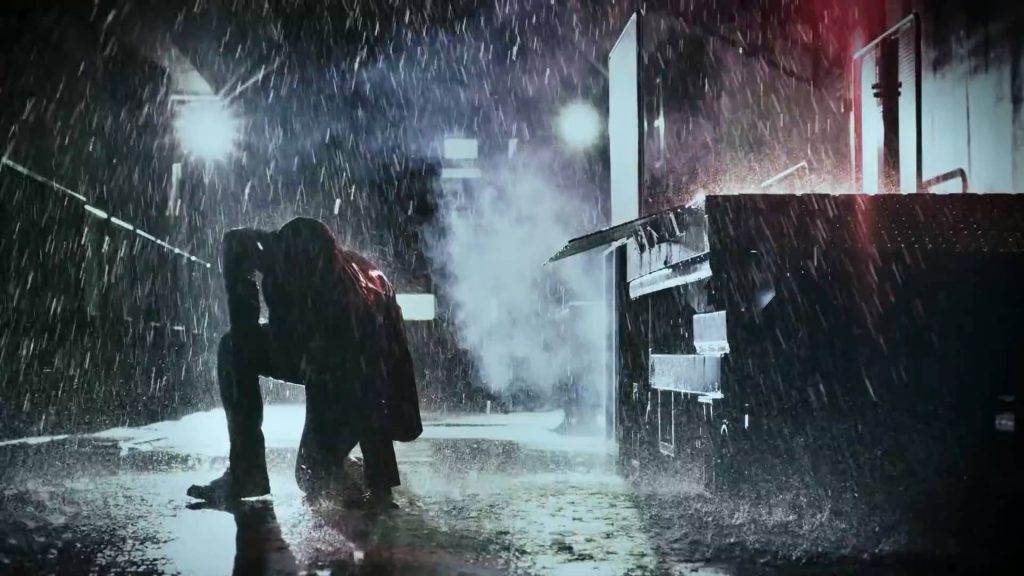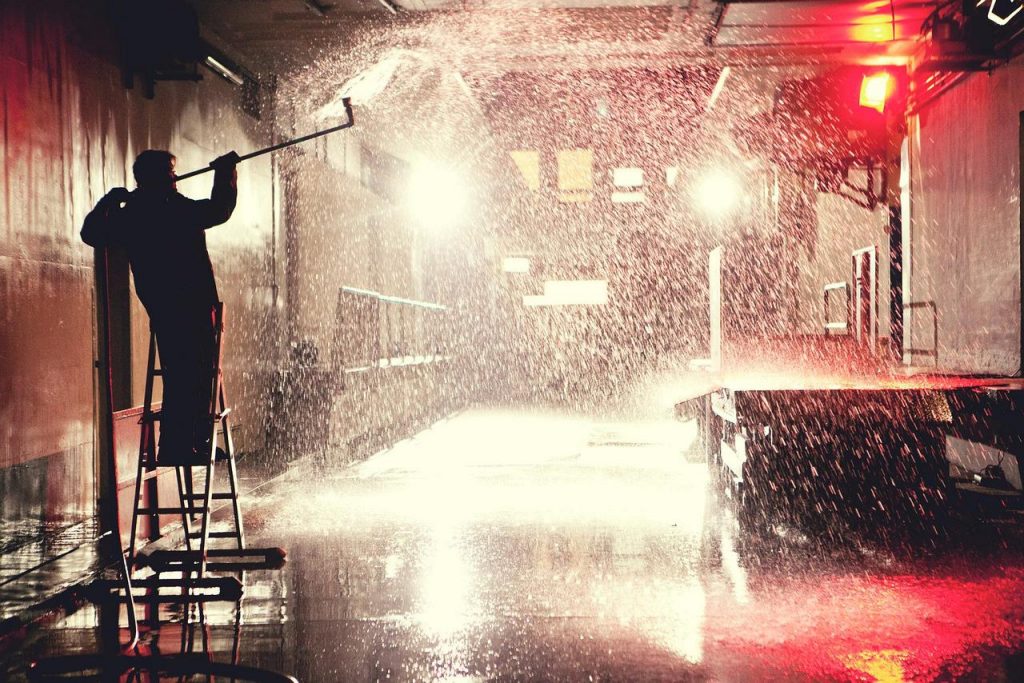Water • Rain
What would movies like “Singin’ in the Rain” or “Perfect Storm” be without rain and water scenes — even in times of digital effects, such elemental effects are often used because the interaction of the actors with the medium water cannot be realistically played and digitally simulated. The attainable bandwidth in such films ranges from romance, drama and action to catastrophe.
As easy as it seems to portray “water” in the scene, as difficult and complex it can be in reality to present this convincingly; especially rain. Whether a light drizzle of rain or a cloudburst — density, quantity and size of raindrops result in partly completely different image impressions. In addition, any kind of rainfall can be changed by different directions of fall; mostly in connection with wind.
We also take care of any other representation of water and its effects. These can be wet roads, floods, tidal waves, heavy seas on ships or only thin streams on a windshield.
Our workshop has an extensive range of technical equipment for a wide variety of tasks, both outdoors and in the studio. With our own tanker trucks we can also take on larger tasks at short notice, away from a sufficient water supply; more on this subject here.


What is there to consider?
BASICS
An important parameter is the area to be sprinkled; it determines the amount of personnel and technology required for an effect. Then the desired strength is applied, as the required amount of water per minute is measured. To do more than sprinkle the windshield of a car, we will always have to test the efficiency of the water supply on the set beforehand.
Large-area rainfall also consumes considerable amounts of water. The sprinkled car in the set above on this page needs e. g. 500–800l per minute. If the local water supply is not able to deliver this quantity, we can compensate for a limited period of time via the tanks of our vehicles for 2–3 minutes. In between, there is a mandatory waiting period until the tanks are filled up again. If waiting times are unacceptable or if there is no water supply on site, we work with mobile storage tanks and tanker shuttles.
ON LOCATION
In a public area, water is usually no problem even in large quantities. In private areas, it is of course necessary to consult with the responsible persons.
Sometimes we have to clarify where the water can disappear to; in some cases we have to work with barriers and pump technology in order to prevent the set from turning into a mud bath within a short time.
When working with water inside buildings, it may also be necessary to check the building substance for suitability, as some floor constructions, for example, are prone to rapid moisture penetration and resulting damage.
IN THE STUDIO
Water in quantities of more than a few liters in the studio or on stage must be approved by the administration and/or the responsible stage manager.
Larger amounts of water, e. g. in set constructions, can represent significant additional loads, not only for the buildings themselves but also for the studio floor. Therefore, we usually cooperate with the construction department in order to avoid the use of unsuitable materials and statically insecure constructions within the set.
Also, all used water must be collected and disposed of, as well as measures need to be taken to prevent damage caused by moisture afterwards.
ACTORS
For actors, performing in wet conditions is a considerable burden that should not be underestimated. Although we do have the technology to bring dozens of cubic meters of water to acceptable temperatures, your actors will still have to recover and warm up regularly.
Not every performer also loves to surround her-/himself especially with large amounts of water, we can offer a targeted training here and if necessary we can also use a safety crew under water.
CREW & EQUIPMENT
Technology on set hardly ever reacts positively to water, especially to larger quantities of it. Rain protection hoods for cameras are therefore obligatory if your DOP wants to move close to the action. Other devices should also be protected as good as possible, respectively the use of battery-operated devices is sometimes safer.
However, the crew should also be well protected if they have to work in the area of the effect; an umbrella is rarely sufficient and waterproof footwear, as well as rainwear is definitely the better choice.
Power and control cables must be laid in such a way that they cannot be flooded. Running water also poses this danger aside the set!